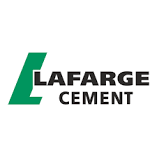
Lafarge Africa Plc FY 2023 Results: PBT Grows by 15.33% Despite FX Revaluation Loss
The global cement business will remain modest amid geopolitical tensions and economic fragmentation. Outlooks put the market’s growth at between 2 and 3% in 2024. The Middle East, India, and Africa would drive the growth in the year. Growth in China and Europe is expected to drop by an average of 5% as softer economic growth and tight monetary policy put the breaks on gross domestic output (GDP). In Nigeria, things are slightly different.
The country’s infrastructural gap and rising population have given the cement industry elbow room to shove forward, ensuring sustained demand. However, in 2023, the business was troubled by a few headwinds. The naira currency redesign policy, FX scarcity, energy drawbacks (inadequate gas supply), and high operating costs snapped at operating profit. Regardless of these difficulties, Nigerian cement companies stumped up impressive performances in 2023, taking advantage of higher product prices and strong demand from the real estate sector.
Lafarge Africa Plc saw topline revenue grew by +8.64% to N405.50bn despite the shutting of the Mfamosing plant in Q3 2023. The group earned additional income from finance income, which grew by +203.38% to N4.65bn and other income at N891.70m, raising the operating profit to N102.02bn in FY 2023 from N84.19bn in FY 2022. The company’s strong revenue shouldered the +22.7% rise in administrative expenses and the +62.56% spike in finance costs triggered by FX revaluation loss. The clinker maker saw a +15.33% growth in profit before tax to N78.78bn in FY 2023. However, Lafarge’s exemption from the pioneer status incentive in 2023 resulted in a +88.50% rise in income tax expenses, which nibbled away at the company’s profit after tax by –4.67 %, leading to a PAT of N51.14bn in FY 2023.
Lafarge’s cash position improved in 2023 as cash and cash equivalent rose to a record high at N168.37bn in FY 2023, complementing its ability to cover debt obligations with an acid test and liquidity ratio of 0.85 and 1.17 in FY 2023. Additionally, the company’s historically low trade receivables and rising trade payables had helped lock in liquidity for the group. The group maintained a relatively low inventory at N54.34bn in FY 2023, suggesting growing demand to fuel the need to expand production capacity beyond 10.5MTPA to achieve a larger market share. Lafarge maintained its reliance on equity for funding as shareholder’s equity increased by +4.55% to N435.05bn, and the leverage ratio trimmed to 0.06x in FY 2023 from 0.09x in FY 2022.
Investor Indicators:
- Market Capitalisation as of March 11, 2024, N547.67bn
- Current Share Price N34/share
- P/E 10.71x
- P/B 1.32x
- P/S 8.38x
- EPS 3.18
- Div. Yield 4.41%
- Industry average Div. yield 3.60%
- Payout ratio 60%
Key Highlights
- Lafarge Africa Plc’s revenue rose by +8.64% to N405.50bn in FY 2023 from N373.24bn in FY 2022.
- Higher input prices pushed the cost of goods sold (COGS) up by +12.29% to N198.79bn in FY 2023 from N177.02bn in FY 2022, making gross profit grow by +5.35% to N206.72bn in FY 2023.
- Administrative expenses grew by +22.07% from N22.58bn in FY 2022 to N27.56bn, while selling and distribution costs declined by -12.86% to N78.06bn in FY 2023 from N89.58bn in FY 2022.
- Other income rose by +59.95% to N891.70m in FY 2023 from N557.49bn in FY 2022, driven by gains on disposal of property, plant, and equipment and government grants.
- Finance income went up by +203.38% to N4.65bn in FY 2023, while the foreign exchange loss resulted in a +62.56% growth in finance costs to N25.98bn.
- Lafarge’s total assets grew to N681.37bn in FY 2023 from N600.711bn in FY 2022.
- The company’s inventories rose by +2.40% to N54.34bn in FY 2023, while receivables rose by +23.90% to N7.87bn in FY 2023.
- The group’s cash and cash equivalent grew to N168.37bn in FY 2023 from N118.40bn in FY 2022.
- Retained earnings inched up by +19.81% to N227.03bn in FY 2023 from N189.49bn in FY 2022, supporting the +4.55% growth in shareholder’s equity to N435.05bn in FY 2023.
- The group’s profit before tax increased by +15.33% to N78.78bn, but profit after tax slipped by -4.61% due to an +88.50% rise in income tax expense.
Revenue
The increased cement price and relatively inelastic demand allowed Lafarge Africa Plc’s revenue to grow by +8.64% to N405.50 bn in FY 2023 from N373.24bn in FY 2022. However, the revenue growth is lower than the growth rate witnessed in the past three years, reflecting the country’s underlying macroeconomic instability on demand. Meanwhile, the group’s revenue has grown by an average of 18% in the past five years, from N213.00bn in FY 2019 to N405.50bn in FY 2023. The revenue came majorly from cement sales, with a contribution of 97% and 3% generated by aggregate and concrete. Analysts foresee better revenue growth in 2024 as the inflationary environment proffers room for higher cement prices (see chart 1 below).
Chart 1:
Profitability
The naira’s 50% devaluation in 2023 resulted in a N21.04bn foreign exchange loss for the cement producer, slightly weighing on their profitability. The group’s profit after tax declined by -4.66% to N51.14bn in FY 2023 as the revenue growth was insufficient to absorb the +88.50% growth in income tax expense, +22.07% rise in administrative expense and +12.29% growth in cost of sales. The double-digit growth in income tax expense was due to the suspension of the pioneer incentives and would likely persist in 2024. However, the group’s profit before tax increased by +15.33% from N68.31bn in FY 2022 to N78.78bn in FY 2023, driven by +59.95% growth in other income, +203.38% rise in finance income, and -12.86% drop in selling and distribution costs. The profit before tax has grown by an average of 50.09% in the past five years, but the post-tax profit has struggled with growth, increasing by an average of -2 % in the past five years. Analysts believe the group needs to introduce tight cost-control measures to revive profitability and possibly take advantage of the Road Infrastructure Tax Credit to trim the effective tax rate (see chart 2 below).
Chart 2:
Cash Flow
Lafarge Africa Plc’s ability to limit trade receivables within N5bn and N8bn in the past five years has supported its liquidity position, increasing from N25.70bn in FY 2019 to N165.84bn in FY 2023. This suggests that a large percentage of the group’s sales are cash-based, and the liquidity position will mostly follow the pattern of revenue growth. Analysts observed the group has utilised loans & borrowings from banks to maintain liquidity, especially in 2022 and 2023, obtaining N27.13bn and N25.10bn loan proceeds to shove up cash and cash equivalent above N100bn. Thus, the group has stronger working capital to cover short-term liabilities and boost production (see table 1 below).
Table 1:
Financial Position
Lafarge’s total assets have grown from N507.21bn in FY 2019 to N681.37bn in FY 2023. Year-on-year, the group’s total assets increased by +13.43% from N600.71bn in FY 2022 to N681.37bn in FY 2023, driven by +42.20% rise in cash and cash equivalent, +23.86% rise in trade receivables, +32.04% rise in other assets, and +1119.3% growth in other financial assets. On the liabilities side, the group’s borrowings reduced by -28.28% to N26.24bn in FY 2023 from N36.59bn in FY 2022, but the finance cost might remain elevated in 2024, given the N27.32bn less than one-year loan maturity. Analysts observed the group’s trade and payables had maintained an upward trajectory since 2019, rising from N69.72bn in FY 2019 to N100.96bn in FY 2023, thus supporting the rising liquidity position. Despite the slight drop in net income and 30.60bn dividend payout, the group’s retained earnings increased by +19.81% to N227.03bn in FY 2023 from N189.49bn in 2022, strengthening the total shareholder’s equity fund to N435.05bn in FY 2023 from N416.10bn in FY 2022 (see table 2 below).
Table 2:
Financial Ratio
The Cement producer’s profitability ratios had a drawback in 2023. The gross and net profit margins dropped to 50.98% and 12.61% in FY 2023 as higher costs of sales and operating costs outran revenue. Similarly, the return on equity and assets slipped to 12.29% and 7.51% in FY 2023 from 14.17% and 8.93% in FY 2022, reflecting a lower efficient use of shareholder’s funds and assets. However, the liquidity ratios improved as the current and acid test ratios increased to 1.17 and 0.85 in FY 2023 and from 1.04 to 0.70 in FY 2022, respectively. The inventory turnover ratio improved to 3.66 in FY 2023 from 3.34 in FY 2022, suggesting a strong sign of sales and quick exhaustion of inventories. Historically, Lafarge Africa Plc has been a low-leveraged firm compared to other dominant cement players, and the leverage ratio further declined to 6.03% in FY 2023, reflecting lesser reliance on debts (see table 3 below).
Table 3:
Valuation
The Nigerian Equities market rally since 2023 has made most listed companies’ share price performance outrun fundamental analysis. This is especially evident in blue-chip companies, whose price-to-earnings and price-to-book value ratios swell to record highs. Lafarge Africa Plc’s fundamental valuation showed P/E increased to 10.71x in FY 2023 from 7.21x in FY 2022, relatively lower than the peer average of 46.8x. Similarly, the price-to-book ratio rose to 1.32x in FY 2023 from 0.93x in FY 2022. Analysts suspect Lafarge Africa Plc has a relatively modest market perception, especially compared to other dominant cement players with relatively higher P/E and P/B ratios. Lafarge Africa Plc’s market capitalisation rose to N531.56bn as of December 29, 2023, from N386.59bn on December 31, 2022, driven by the upward share price movement (see table 4 below).
Table 4:
Share Price
Lafarge Africa Plc reflected the Nigerian equities market performance in 2023, running a bullish race from N24.00k on January 03, 2023, to N31.50k on December 29, 2023. The share price fluctuated upwardly, with a few drops experienced mostly after the dividend payout in April and November. The support price during the period was N23.00k while the resistant price was N31.55k, generating a year-to-date (YTD) return of +31.25% as of December 29, 2023, lower than the NGX ASI YTD return of 45.90%. In Q1 2024, the price rally persisted, rising to a new resistance price of N47.00k on January 19, 2024, but after that, commenced a downward trend to settle at N31.50k on March 11, 2024, possibly triggered by manufacturing companies’ substantial foreign exchange losses (see chart 3 below).
Chart 3:
Competitor Analysis: Ballooning Operating Expenses Snap Profit Margins
The cash crunch, energy shortage, FX scarcity, and tumbling consumer incomes affected the cement industry’s performance in 2023. However, the country’s high reliance on cement for housing and road construction supported demand despite the harsh macroeconomic environment. Dangote Cement saw the highest revenue growth at 36% at N2.21trn, followed by BUA Cement at 27% to N460.00bn, and Lafarge Africa Plc had the least at 9% to N405.50bn.
Despite the increased cost of sales, the cement companies earned a higher gross profit margin, with Dangote Cement leading at 54%, followed by Lafarge Africa Plc at 51%, and BUA Cement at 40%. Given higher operating costs, net profit margins fell across companies, with Dangote Cement leading at 21%, BUA Cement at 15%, and Lafarge Africa Plc at 13%. A 50%-naira devaluation resulted in significant FX revaluation losses, putting pressure on profit; Dangote Cement had the highest at N164.08bn, followed by BUA cement at N69.96bn, and Lafarge had the lowest at N21.04bn.
Based on cash position, Lafarge Africa Plc was the most liquid with a liquidity ratio of 1.14x, followed by BUA cement at 1.06x, and Dangote Cement had the least at 0.87x. The outcome is expected as BUA and Lafarge have historically had relatively lower receivables than Dangote. Similarly, the leverage ratio showed that BUA cement was highly leveraged at 1.38x as recent debt brought total borrowings to N532.28bn relative to N385.22bn equity. Dangote cement had a leverage ratio of 0.59x, while Lafarge had the lowest at 0.06x, consistent with its historical reliance on shareholder funds. The listed Nigerian cement companies’ total assets rose to N5.84trn in FY 2023 from N4.09trn in FY 2022, with a distribution of 67% for Dangote, 21% for BUA and 12% for Lafarge (see dashboard 1 below).
Dashboard 1:
Closing Thoughts
Nigeria’s high reliance on cement for construction reduced the impact of higher operating expenses on profit margins. However, FX revaluation losses hurt industry earnings. Analysts expect the industry to recover in 2024, with higher product prices (hovering between N9000 and N10,500 per 50kg bag as of March 2024 from the average of N5000 to N5900 in Q4 2023) and new infrastructural projects by the new administration based on recent budget allocations. However, currency risk would likely persist, but analysts are mildly optimistic that corporate revenue growth would absorb possible FX revaluation losses, given that the Naira at both the official and parallel markets have seen less volatility and shown signs of convergence (see chart 4 below).
Chart 4:




